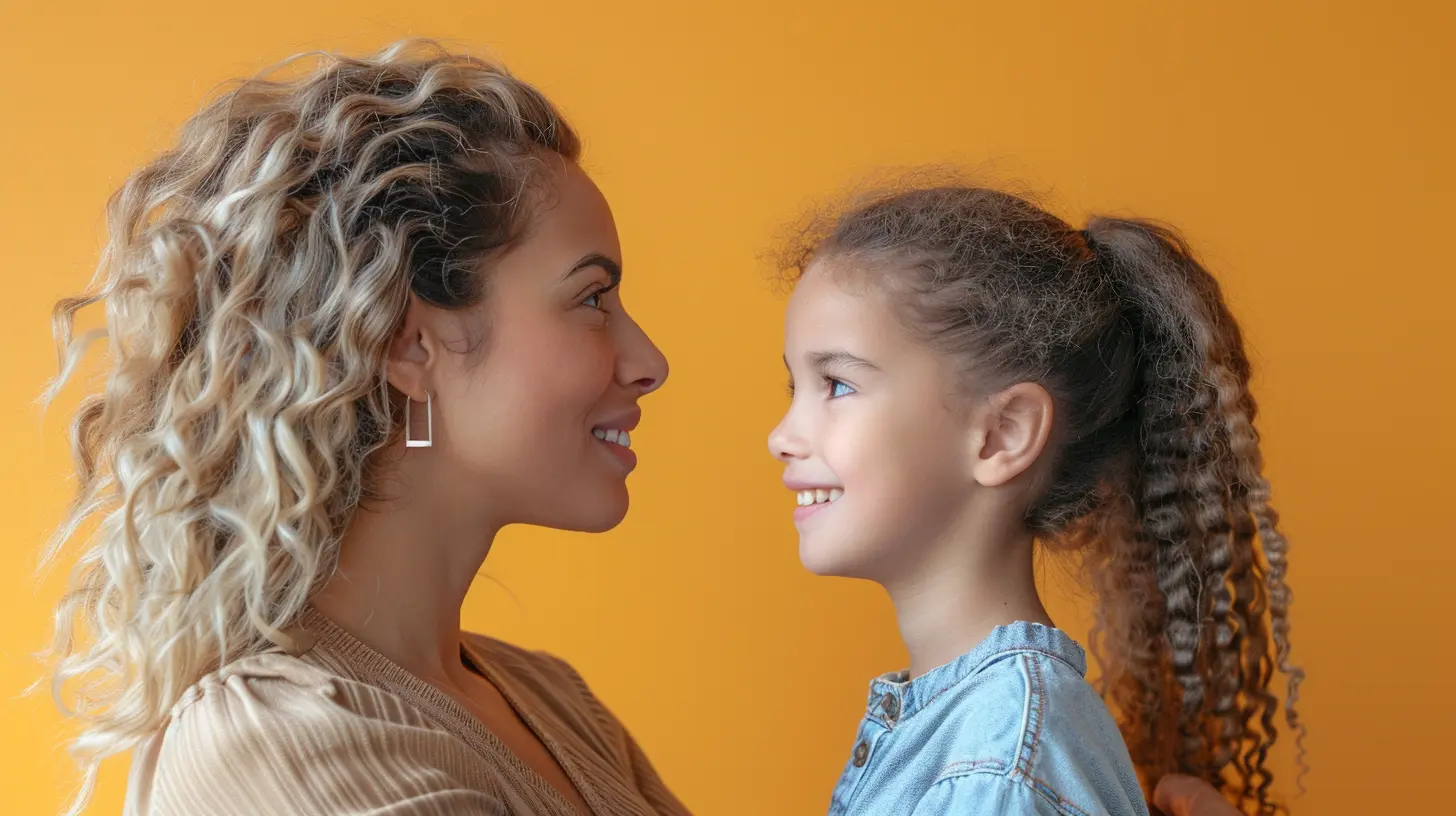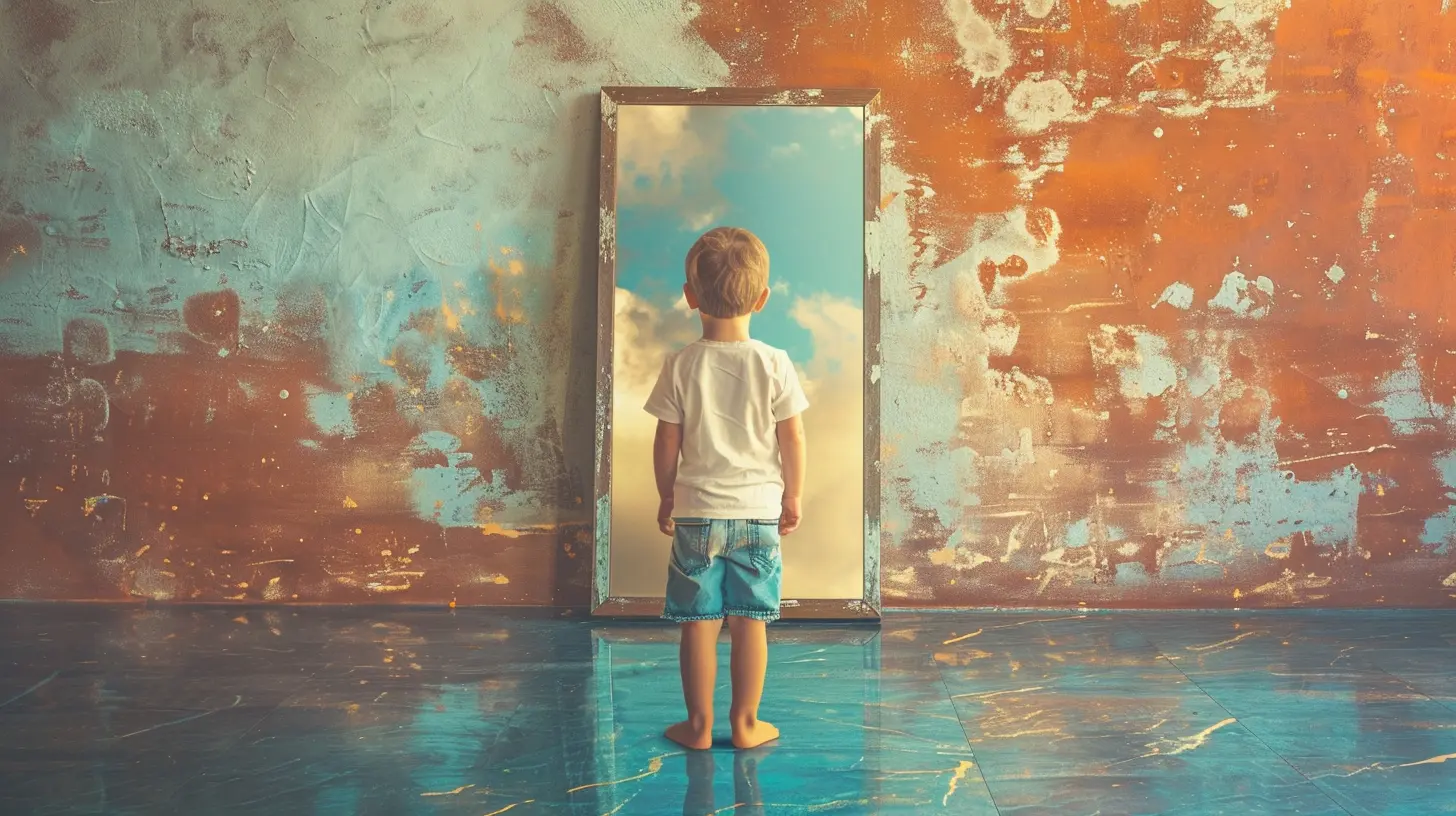The Importance of Body Language in Developing Self-Confidence
21 November 2025
Have you ever walked into a room and immediately felt someone's confidence — even before they said a single word? That mysterious "it" factor you sensed? Yep, that’s body language doing the talking.
Confidence isn’t always about what you say, but how you carry yourself. And when it comes to kids, teens, and even adults trying to build or rebuild self-esteem, body language plays a surprisingly powerful role. Whether it’s standing tall, making eye contact, or even just smiling, these nonverbal cues speak volumes — not just to others, but to ourselves as well.
In this article, we’ll dig deep into how body language helps develop self-confidence, how it impacts parenting, and how you can use it effectively to raise more self-assured kids (and boost your own confidence while you're at it!).
What Is Body Language, Anyway?
Let’s start with the basics. Body language is a huge part of non-verbal communication — all those little things we do without speaking that give away how we’re feeling.Think:
- Facial expressions 🧐
- Posture 🧍
- Gestures 👋
- Eye contact 👀
- Tone and rhythm of voice 🎤
- Even how we breathe 😮💨
Now here’s the kicker — studies show that over 70% of communication is non-verbal. That means people are picking up on your vibes way before you open your mouth! So if your body says “I'm nervous” or “I don’t believe in myself,” chances are, that message is louder than anything else.
Why Body Language Matters in Building Confidence
1. Your Body Talks to You, Too
Here’s something most people overlook: your body language doesn’t just communicate to others — it actually sends messages to your own brain. That’s right. The way you hold yourself can literally make you feel more or less confident.Have you heard of the “power pose”? That’s when you stand tall, chest up, arms open, and take up space — like a superhero. Research by social psychologist Amy Cuddy found that doing this for just two minutes can increase testosterone (the “confidence” hormone) and lower cortisol (the "stress" hormone). Pretty cool, huh?
So, next time you're feeling unsure? Strike a pose. Yes, literally.
2. Positive Body Language Reinforces Positive Self-Talk
Let’s paint a picture.Imagine your child slouches, avoids eye contact, and mumbles. What kind of internal dialogue might they be having?
Now imagine them standing tall, smiling, making natural eye contact. That small change in posture can shift the inner monologue from “I’m not good enough” to “I’ve got this.”
This matters, especially for kids and teens whose self-identity is still forming. Our body language can either echo our doubts or drown them out.
Teaching Kids the Power of Body Language
As parents, we teach our children how to eat politely, tie their shoes, and clean up after themselves. But when was the last time you taught your child how to stand confidently or offer a solid handshake?It’s easy to assume these skills develop naturally, but that’s just not true for everyone. Like any other life skill, confident body language can be learned — and taught.
1. Be the Role Model
Kids are tiny mirrors. They copy what they see. If you, as a parent, constantly project nervous energy — arms crossed, eyes down, hesitant voice — your child will likely mirror that behavior.Try this:
- Stand tall when you speak to your child.
- Maintain warm but confident eye contact.
- Use open gestures when explaining things.
- Walk with purpose.
These small shifts don’t just influence your child subconsciously — they also show them what confidence looks like.
2. Make It a Game
Turning body language into a game makes learning fun and less awkward. Try playing “Confidence Charades,” where one person acts out confident or non-confident body language and others guess.You could also have “Power Pose Time” every morning to hype up your kids before school. Treat it like a mini pep rally before the day begins.
3. Watch and Learn Together
Watch scenes from movies or shows and ask your child:- “Does that character seem confident?”
- “What makes you think that?”
- “How are they standing?”
This sparks conversation and helps children connect the dots between posture, tone, and inner strength.
How Parents Can Use Body Language to Boost Their Own Confidence
We spend so much time pouring confidence into our kids, we often forget to refill our own cup.Let me ask you — when was the last time you noticed your own body language? Are you showing up in a way that reflects the self-assured person you want to be?
1. The 2-Minute Power Pose Rule
Seriously, try it.Before a big meeting, parent-teacher conference, or even a hard conversation with your child, take two minutes in the bathroom or your bedroom. Stand tall with your hands on your hips like Wonder Woman. Breathe deeply.
This small trick can reset your mind, boost your mood, and increase clarity.
2. Record Yourself Talking
Yes, it’ll feel weird. But it’s incredibly useful.Most of us have no idea what we look or sound like when we’re talking — especially when we're nervous or unsure. Recording yourself (even just a voice memo or selfie video) can show you habits you may not realize you have — like looking down, filler words, or closed-off gestures.
Awareness is the first step toward change.
How Body Language and Emotions Are Connected
Our bodies and minds are "besties," constantly chatting with each other behind the scenes.You know that feeling when you’re anxious, and your stomach does backflips? Or when you’re excited and your whole body just feels light? That’s the mind-body loop at work.
Here's the thing — it also works in the other direction.
Changing your physical state can influence your emotional state. That means:
- Standing tall can help you feel braver
- Smiling (even fake smiling at first) can help you feel happier
- Relaxed shoulders can make you feel less tense
So, if your child is feeling insecure before a big test or performance, guide them to take deep breaths, uncross their arms, and smile. It may feel silly, but it can rewire their emotional response in the moment.
Common Body Language Mistakes That Undermine Confidence
We’re all guilty of these now and then, especially in high-stress situations. But being aware of them is half the battle.Here are a few body language habits that can signal low confidence — and how to fix them:
| Habit | What It Signals | How to Fix It |
|-------------------------------|----------------------------|------------------------------------------------|
| Slouching shoulders | Insecurity, lack of energy | Roll shoulders back, keep spine straight |
| Avoiding eye contact | Dishonesty, fear | Practice holding eye contact 2–3 seconds |
| Fidgeting | Nervousness | Keep hands relaxed or use purposeful gestures |
| Crossed arms | Defensiveness | Keep arms open or rest casually at your sides |
| Mumbled or rushed speech | Doubt, shyness | Slow down, breathe, speak clearly |
Confidence isn’t about perfection — it’s about presence.
The Secret Sauce: Consistency
Confidence built on body language isn’t a one-and-done deal. It’s the result of daily practice.Just like building muscle at the gym, using confident body language regularly turns it into second nature. And when it becomes a habit, your brain starts to believe the story your body is telling.
So, remind your child (and yourself!) that this isn't about faking anything. It’s about tapping into the confident self that already exists — and using body language to let it shine.
Wrapping It Up: Confidence Is Contagious
Here’s what it all boils down to — body language is a superpower we’re all born with, but not everyone learns how to use.As parents, we have a huge opportunity to guide our children in using this tool to build authentic confidence from the inside out. It's not about being loud or aggressive — it’s about showing up boldly, with openness, warmth, and a sense of worth.
And hey, while you're teaching your child to stand tall, use their hands when they talk, or make eye contact — you might just find yourself doing it too.
And that? That’s the magic of parenting.
all images in this post were generated using AI tools
Category:
Building ConfidenceAuthor:

Zelda Gill
Discussion
rate this article
1 comments
Rylan Burton
Thank you for highlighting the crucial role of body language in nurturing self-confidence in children. It’s a powerful reminder that our non-verbal cues can significantly impact their development. I appreciate your insights on this important topic!
November 21, 2025 at 5:59 AM


